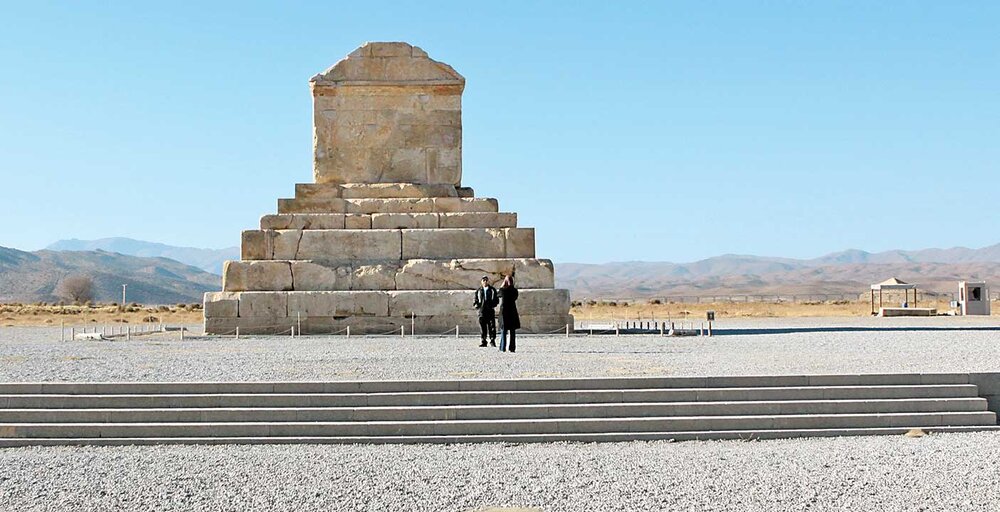Pasargadae is more than meets the eye: archaeologist

TEHRAN—An Iranian archaeologist believes the UNESCO-designated Pasargadae, which began under Cyrus the Great in about 546 BC, was more expanded than what we now perceive from its ruins.
“Archaeological evidence suggests that Pasargadae is beyond what we see. It was a summer residence, a recreational area with many gardens and buildings…,” IRIB quoted archaeologist Ali Mousavi as saying on Sunday.
Situated about 50 km north of Persepolis, Pasargadae was the first dynastic capital of the Achaemenid Empire in the 6th century BC. Its palaces, gardens, and the mausoleum of Cyrus are outstanding examples of the first phase of royal Achaemenid art and architecture and exceptional testimonies of Persian civilization.
“For instance, based on comparative research on the stone tower of Pasargadae’s Prison of Solomon, we believe that tower and its surroundings had a religious function and were a sacred environment at that time.”
Citing another example, the archaeologist noted: “In this area, a special place was built with clay, which is the oldest fire temple of the Achaemenid period ever discovered.”
“Next to this building, numerous goat or lamb bones have been discovered, which were burned in a ceremony according to the writings of one of the tablets uncovered from the ramparts of Persepolis, and it can be seen that a special religious ceremony was held here, and after that, it was closed forever.”
Based on information inscribed on clay tablets, 420 sheep and goats were sacrificed in a special ritual, he said. “This sacred fire temple, that was discovered in the Pasargadae area, was related to the ceremony of honoring the fire at the beginning of the Achaemenid period when the ritual of animal sacrifice was still practiced.”
“Pasargadae is beyond what we imagine. It was a summer residence, a recreation area with many gardens and buildings for different purposes,” Mousavi said.
“Pasargadae is the oldest Achaemenid historical site. Today, the most prominent work in this area is a building known as the tomb of Cyrus [the Great], but there are other important architectural remains in this area,” the archaeologist concluded.
Pasargadae developed into a city of some significance until it was superseded by Darius I’s magnificent palace in Persepolis. The key sights on this isolated plain are the Tomb of Cyrus, Darius' Garden, and Cyrus' private palace. Around 500m north of Cyrus’ private palace is the remains of the Prison of Solomon (Zendan-e Soleiman), variously thought to be a fire temple, tomb, sundial, or store. On the hill beyond is the Tall-e Takht–a monumental 6000-sq-meter citadel used from Cyrus’ time until the late Sassanian period. Local historians believe the references to Solomon date from the Arab conquest when the inhabitants of Pasargadae renamed the sites with Islamic names to prevent their destruction.
Furthermore, the World Heritage site is also home to a complex water supply system for the time that comprises cisterns, tunnels, underground canals, and ducts, which are locally known as qanats.
It is believed that the development of qanats began about 2,500 or 3,000 years ago in Persia (Iran), and the technology spread eastward to Afghanistan and westward to Egypt. Although new qanats are seldom built today, many old qanats are still used in Iran and Afghanistan, chiefly for irrigation.
The 160-ha archaeological site of Pasargadae presents some of the earliest manifestations of Persian art and architecture. It includes, among other monuments, the compact limestone tomb on the Morgab plain that once held Cyrus the Great’s gilded sarcophagus; Tall-e Takht (“Solomon’s Throne”), a great fortified platform built on a hill and later incorporated into a sprawling citadel with substantial mud-brick defenses; and the royal ensemble, which consists of several palaces originally located within a garden layout (the so-called “Four Gardens”). Pasargadae became a prototype for the Persian Garden concept of four quadrants formally divided by waterways or pathways, its architecture characterized by refined details and slender verticality.
Pasargadae stands as an exceptional witness to the Achaemenid civilization. The vast Achaemenid Empire, which extended from the eastern Mediterranean and Egypt to the Indus River in India, is considered the first empire to be characterized by a respect for the cultural diversity of its peoples.
Experts believe that Pasargadae represents the first phase of this development, specifically Persian architecture, which later found its full expression in the city of Persepolis.
AM
Leave a Comment